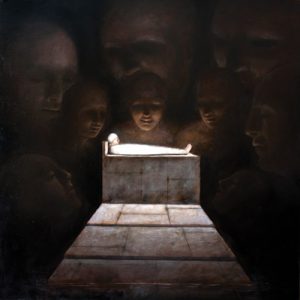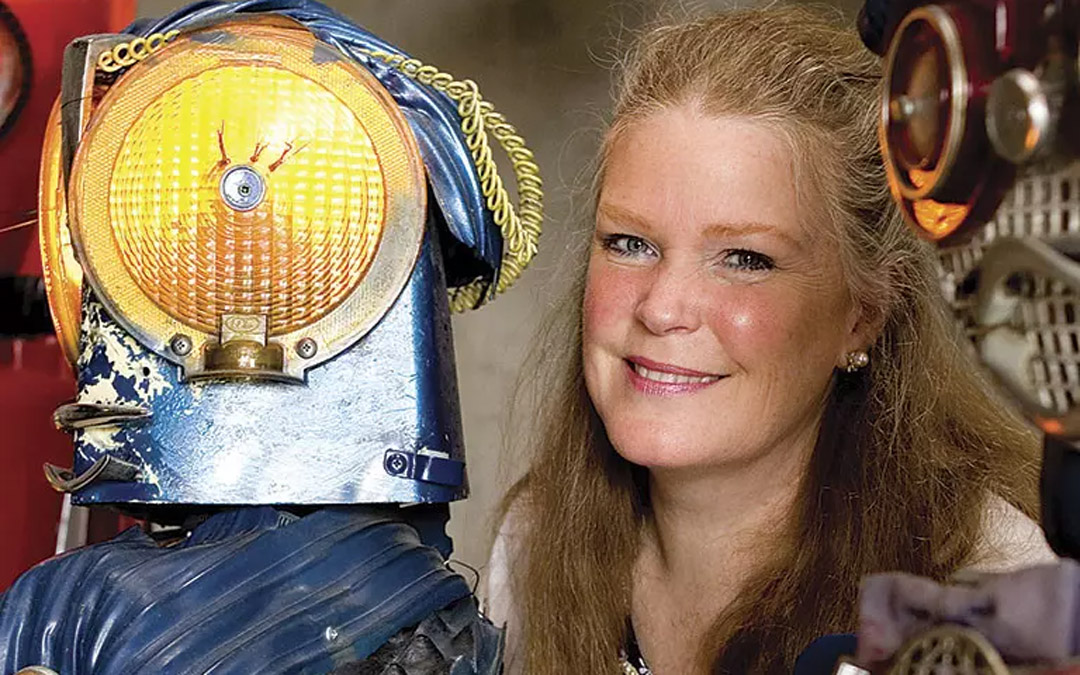How’d you sleep last night?
Hopefully better than I did. I tossed and turned for hours before finally dozing off, only to be awakened by a phone call around 4 a.m.
Or maybe I just dreamt the phone call? Then the tossing and turning started again.
As I sit down to write this article, my head feels heavy, my body aches and my eyes burn. Why does sleep, such a natural and essential part of being human, tend to be a challenging pursuit for so many of us?
It’s just one of the questions tackled by the American Visionary Art Museum in its new exhibition, “The Science and Mystery of Sleep,” which opened Oct. 10 and runs through August of 2022.
I recently spoke with Rebecca Alban Hoffberger, the AVAM’s founder, curator and director, about the museum’s dreamiest show to date.
Jmore: Sleep — why is that a good topic for an exhibition?
Hoffberger: As many scientists tell us, sleep is even more important than diet and exercise as a determinant of our health and longevity. Changing your sleep habits can greatly improve health.
Fox example, by simply eliminating Daylight Saving Time, suicide and heart attack rates would fall by retaining the extra hour of sleep.
The exhibition looks at sleep from a variety of viewpoints, right?
Yes. We explore sleep’s latest, most cutting-edge scientific research, along with age-old and multi-cultural, best folk wisdom.
Talk a little about the science of sleep.
Matthew Walker [a sleep expert and professor of neuroscience and psychology at the University of California, Berkeley] has found that men who sleep less than five hours a night have smaller testicles, and a lack of sleep also decreases hormones in women. He says, ‘Humans are the only animal that intentionally curtails sleep.’ And the World Health Organization found that people who do nightshift work are more susceptible to some types of cancer.
The exhibition includes an 18-step recipe for good sleep. [For instance,] 65 degrees is the best sleeping temperature.
We’re also hoping [the exhibition] will encourage little kids and teenagers to have a greater understanding of the importance of sleep. There are a lot of polls now about starting high school later [in the day]. When the hormones start kicking in, kids need more sleep. If they don’t get it, it lowers test scores and grades.
What about the exhibition’s visual components?
It is anchored by three handmade bedrooms by visionary artists — one by [the late Romanian-American artist] Noche Crist, who painted and sculpted a dream bed. Then, we have a beautiful bedroom set from Adrian Lee Kellard, a very handsome young man who was HIV-positive when that was a death sentence. He loved going to church, but then [because he was HIV-positive] was told not to come to services. So he transformed his bedroom into a church.
And one [artwork] by Sam “The Dot Man” McMillan that was given to us 12 years ago and we wanted to include it.
We also have [replicas of] Alex Grey’s paintings “Dying” and “Insomnia.” I chose Alex Grey’s exquisite, very spiritual painting image “Dying” to best illustrate the Talmudic wisdom, ‘Sleep is 1/60 of death.’

I used the image ‘Enigma del Sogno o il Risveglion’ that stunned me with its beauty by a young Italian artist Alessandro Siciordr, who paints like an 18th-century mystic, for the ideal image to illustrate the second part of the Talmudic wisdom, “Dreams are 1/60 of prophecy.” I am intrigued by pre-cognitive dreams of everyday people, the times we have a dream that later comes true in every detail.
Like most of my shows, the exhibit is laden with quotes like the Talmudic quotes and ‘Sleep is the best meditation’ by the Dalai Lama, and “Never go to bed mad. Stay up and fight” by [comedian] Phyllis Diller.
The exhibition also links sleep to creativity.
The exhibit talks about the hypnogogic state championed by Dr. George Church, a virologist, neurologist, geneticist and a narcoleptic. The hypnogogic state is the period of transition between sleeping and being awake. When we’re stuck on a problem, we get some of our best ideas in the period between waking and sleeping.
We also talk about the magic of naps. Some of the most famous nap-takers were Leonardo da Vinci, Ludwig van Beethoven and [Nikola] Tesla. When we’re stuck on a creative problem that the conscious waking mind can’t solve, some people can train themselves to take a nap and come up with a solution.
[Baltimore-born filmmaker] Arna Vodenos put together a film about George Church and a local guy named Landis Expandis, an artist and musician who plays all the music in the video. He’s very articulate in singing, and he did a song and interview about how he gets his best ideas for songs when he sleeps.
For information about the American Visionary Art Museum and the “The Science and Mystery of Sleep,” visit avam.org.





